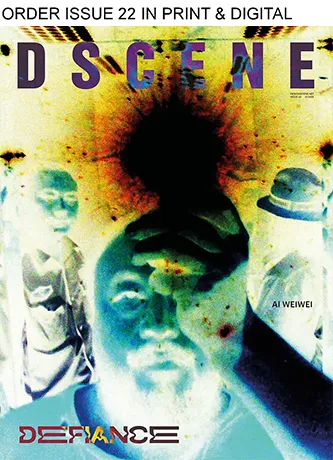
Sexual assault happens to an American every 74 seconds. The fashion industry faces one of the most overlooked workplace crises of our time related to sexual assault. The numbers tell a disturbing story – 87% of models say they were asked to undress without warning, while 30% faced inappropriate behavior during work.
The modeling industry’s sexual harassment continues in part because models work as independent contractors with limited legal protections. Young women aged 18-24 face a particularly high risk, experiencing sexual assault 3-4 times more often than the general population. Women hold over 70% of entry-level positions at Fortune 1000 apparel companies, yet female CEOs lead only 14% of these organizations.
This piece gets into how power imbalances make abuse possible. We’ll share stories from survivors who broke their silence and look at legal and social reforms that want to create lasting change. Models who speak up often pay a devastating price professionally.
Survivor Stories That Sparked a Movement
In October 2017, a movement was initiated by supermodel Cameron Russell. She began posting anonymous anecdotes of other models on Instagram under the hashtag “MyJobShouldNotIncludeAbuse” that became a turning point in the fashion industry. The digital movement was catalyzed only a few days following the release of an explosive Harvey Weinstein story by the New York Times that ultimately revealed an open secret that has been troubling the modeling industry over the decades.
These intertwined tales showed that there was something terribly wrong: influential industry players abused young models sexually and told them to keep quiet so that their careers would not be wrecked. but kept it to themselves in fear of losing their careers. One model spoke out about her experience, she said: “There are consequences of speaking out. I reflect on my career and it is so sad but I was a child who told them, No more, No more, do not rape me. I didn’t work. I was taken out of the game”.
The Instagram account @ShitModelMgmt received around 300 names of alleged perpetrators in 2018. This revealed how agents ignored harassment reports. Models described disturbing experiences – photo shoots in photographers’ apartments late at night, nonconsensual nudes, and promises of fame in exchange for sexual favors.
Models who report misconduct often see their careers end abruptly. One survivor’s experience highlights this reality: “Since I spoke out, I now struggle to book jobs unlike that ever spread. I was booking work regularly and frequently before I came forward”. This explains why the industry’s “whisper network” stayed underground for so long.
Culture of Silence in the Fashion Industry
Structural inequality has been the base of a $2.5 trillion fashion economic machine that has led to systemic sexual harassment and assault issues. A massive power discrepancy is at the core of it; women’s presence among entry-level fashion staff is 70%, but the presence of women in top corporate management positions in fashion is only 14%.
Models remain vulnerable because of financial dependency. Their agencies typically hold “power of attorney” and accept payments for them while taking out inflated expenses without clear accounting. Despite regular work, many models end up in debt to their agencies. This creates perfect conditions for predators like Jeffrey Epstein who became deeply embedded in this world.
The financial trap tightens as agencies take 20% commission from models while charging clients another 20%. One industry expert puts it bluntly: “Modeling agencies are sometimes like pimps for rich people”.
Young workers start early – most models begin their careers before age 16. They lack simple labor protections because agencies classify them as independent contractors instead of employees. This means they can’t unionize to fight workplace abuses.
“The party life” brings more dangers. Models must take part in informal networking where male authority figures often make sexual advances. Refusing these advances comes at a professional cost, as one model learned: “They said, ‘Just don’t make us lose him as a client'”.
Fighting Back: Legal and Social Reform Efforts
Sara Ziff‘s Model Alliance is pioneering the fight against sexual assault in the fashion industry. “This kind of abuse is likely to happen because the industry is largely unregulated,” notes Ziff. Her organization hears from models about sexual assault and trafficking schemes almost daily.
Legal reforms have emerged from advocacy efforts. In New York, the Adult Survivors Act created a one-year look-back window that lets adult survivors of sexual abuse pursue civil claims even if the normal statute of limitations had expired. In California, lawmakers have expanded the statute of limitations for sexual-abuse claims – especially those involving minors – allowing adult survivors to file within 10 years of the assault or 3 years from discovering the harm, while child survivors can file claims until age 40 or within 5 years of discovery. These reforms also include revival periods that reopen previously time-barred cases, giving survivors the chance to seek justice years after the abuse occurred.
The Child Model Act of 2013 gave labor protections to models under 18, but most still lack simple workplace rights as independent contractors. The Fashion Workers Act passed just recently. It will make modeling agencies register with the state, uphold fiduciary duty to models, and get consent before using AI-generated likenesses.
The Model Alliance‘s RESPECT Program creates detailed binding standards for industry behavior. These standards are a great way to get accountability that was missing before. But models who speak out still face career destruction. A former model puts it well: “If you work in the fashion industry…where are the guidelines? Where are the laws?”.
We have a long way to go, but we can build on this progress through persistent advocacy. Real change needs to fix the system itself, not just deal with individual bad actors.
Finally, the fashion industry‘s sexual assault crisis shows a disturbing reality. Power imbalances and financial dependency create perfect conditions for abuse. Of course, brave models who shared their stories through movements like #MyJobShouldNotIncludeAbuse have broken the long-standing culture of silence. These models pay a steep price – their career opportunities disappear, professional relationships break down, and financial stability crumbles. All the same, their testimony has forced this appearance-obsessed industry to face its ugliest truths.
Legislative efforts like the Adult Survivors Act and the Fashion Workers Act mark real progress. These laws finally tackle the structural vulnerabilities that leave models exposed. The Model Alliance’s work offers practical solutions through the RESPECT Program and establishes binding standards where none existed before.
Real change needs more than scattered reforms. The fashion industry must face its core power structures – agencies controlling finances, executives determining careers, and models’ persistent classification as contractors instead of employees. These problems are systemic and need proper attention, or sexual assault will remain an occupational hazard rather than an exception.
We cannot accept an industry where truth-telling destroys careers. The $2.5 trillion fashion machine has the resources and duty to protect those who bring its creations to life. The focus now changes from possibility to accountability – will industry leaders finally own up to their role in allowing harm? Fashion celebrates creativity and innovation daily. The time has come for it to reinvent itself.



















